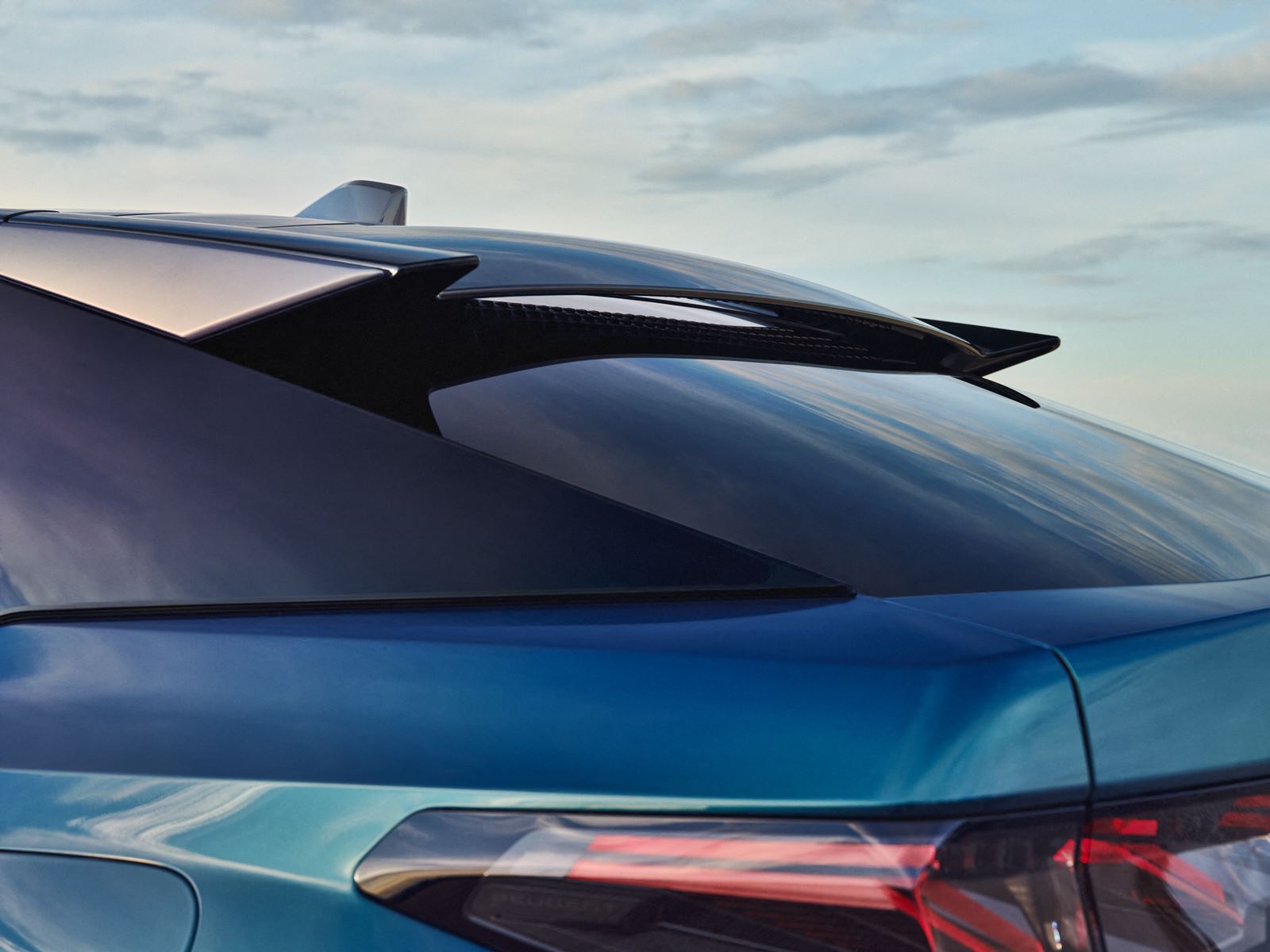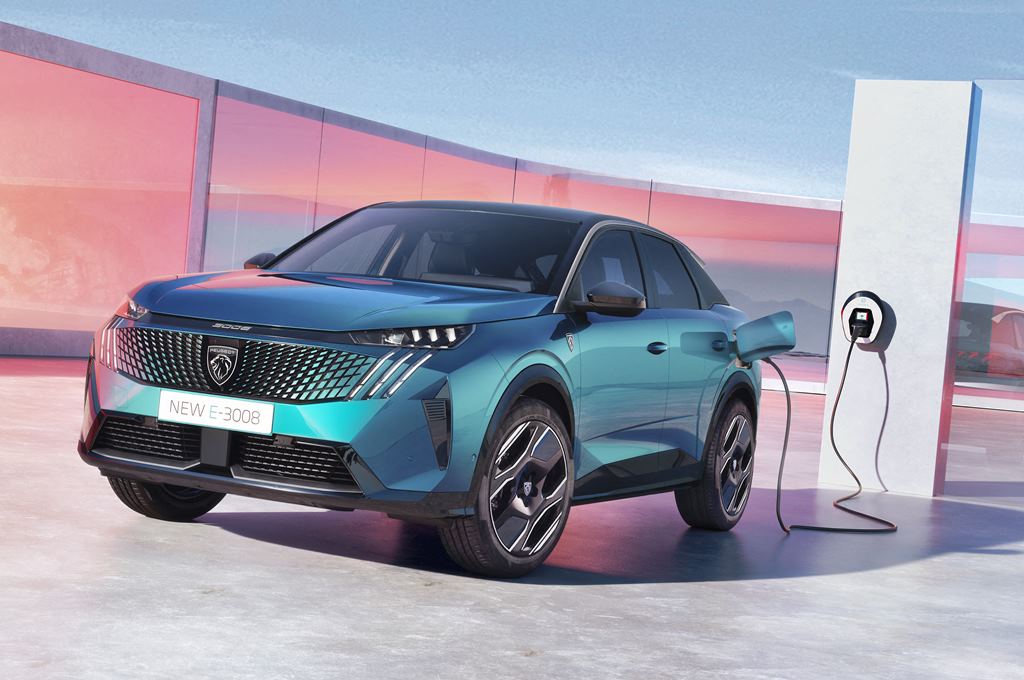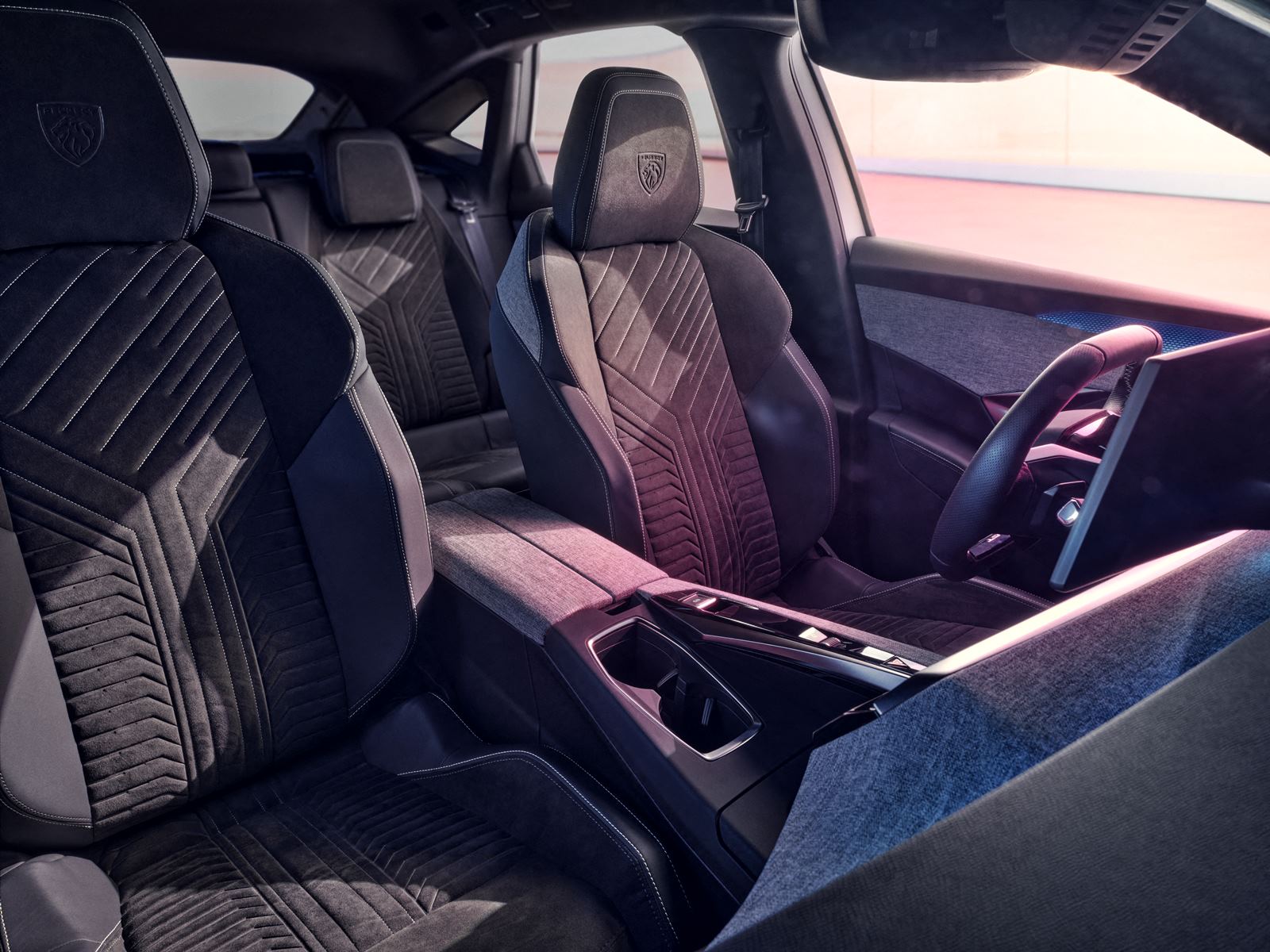Since it went on sale in 2008, the Peugeot 3008 has changed from being a MPV to a SUV and now, for its third generation, it is still a SUV but is fully electric for the first time. This is in line with Peugeot’s intention to sell only battery electric models in Europe by 2030. However, hybrid and plug-in hybrid powertrains will also be available.
More fastback design
As the new E-3008, the model has received a more fastback design that brings the CD down to 0.28. Though compact in size, it still retains the same boot capacity (520 litres) as before even with the new shape.

The new front end gets ultra-compact LED headlamps while the wheels (19 inches and 20 inches) have been styled not only for aesthetic appeal but also aerodynamic efficiency.

At the rear of the E-3008, the designers modernised the traditional slope of the fastback with a ‘floating’ spoiler. Some may remember this being a feature on the Quartz Concept of 2014 (which was suspected to be the basis for the next 3008). The spoiler enhances the curve of the new bodywork while optimising aerodynamics and complementing the distinctive 3-claw rear light signature.

First to use STLA Medium platform
The E-3008 will be the first model to use Stellantis’ brand-new STLA Medium platform. This has an electric motor coupled to an electric gearbox to deliver more power, efficiency and torque, with power supplied by a lithium-ion battery. A range of up to 700 kms is claimed.
There are three drivetrain choices: 210 bhp/157 kW Standard Range; 230 bhp/170 kW Long Range; and 320 bhp/240 kW Dual Motor providing all-wheel drive.

400V system
The SUV has a 400V system and for AC charging, two types of on-board chargers are available to give owners more flexibility. An 11 kW 3-phase charger is standard but customers also have the option of fitting a 22 kW charger (also 3-phase).
For DC rapid recharging, the Mode 4 socket is capable of charging speeds up to 160 kW, enabling the battery pack to be recharged from 20% to 80% in 30 minutes. An optional Long Range battery pack is said to require less than 30 minutes to complete the same amount of charging.
![Stellantis STLA Medium Platform [2023]](https://www.motaauto.com/wp-content/uploads/2023/07/Stellantis-STLA-Medium-Platform-2023-3.png)
The V1G or Smart Charging function can also adjust the time and power at which the battery is charged to optimise charging costs
The E-3008 also features a V2L (Vehicle to Load) function, which allows for charging external devices. The system can supply up to 3 kW and 16 A.
Panoramic i-Cockpit
The highlight inside is the Panoramic i-Cockpit which is the latest version of the innovative instrument panel which first appeared in the 208 in 2012. In this latest generation, there is a floating, curved 21-inch HD panoramic screen that combines the head-up display with the central touchscreen.

Positioned for optimum ergonomics, the panoramic screen is slightly curved towards the driver while remaining perfectly accessible to the passenger. Next to the panoramic screen, the instrument cluster combines all the information relating to driving (speed, power, driving aids, energy flow) above the new compact steering wheel.

In the centre of the dashboard, the touchscreen is used to manage the heating/air conditioning, navigation and media/connectivity systems. The central part of the dashboard also houses the i-Toggles which are customisable touch-sensitive buttons.

These can be programmed to provide quick access to 10 of the user’s favourite functions, eg calling a specific contact, starting navigation to a frequently used destination, or setting the air-conditioning to a favourite temperature.

The new Panoramic i-Cockpit also introduces two paddles behind the steering wheel which allow the driver to choose from three levels of regenerative braking. The LOW level has a feeling close to that of conventional brakes, while the MEDIUM level provides increased deceleration. The HIGH level maximises regeneration which will recover more energy but it also means stronger deceleration. As the deceleration in HIGH and MEDIUM levels are strong, the brake lights are automatically switched on.
Green materials
More than 500 kgs of ”green materials’ are present throughout the vehicle (metals + polymers). These include green steel and aluminium represent 60% of the total mass of green materials; more than 30 polymer parts produced with green materials; and recycled plastic for the bumpers, spoilers, storage bins and carpets.
The sustainable design approach is illustrated by the reduction in the number of decorative inserts on the bodywork and the removal of all chrome parts on the exterior of the E-3008.

Click here to know more about Peugeot models in Malaysia
